CHEMICAL IDENTIFICATION
-
RTECS NUMBER :
-
HO0350000
-
CHEMICAL NAME :
-
5H-Dibenz(b,f)azepine, 10,11-dihydro-5-(3-(methylamino)propyl)-
-
CAS REGISTRY NUMBER :
-
50-47-5
-
BEILSTEIN REFERENCE NO. :
-
1432747
-
LAST UPDATED :
-
199706
-
DATA ITEMS CITED :
-
19
-
MOLECULAR FORMULA :
-
C18-H22-N2
-
MOLECULAR WEIGHT :
-
266.42
-
WISWESSER LINE NOTATION :
-
T C676 BN&T&J B3M1
HEALTH HAZARD DATA
ACUTE TOXICITY DATA
-
TYPE OF TEST :
-
TDLo - Lowest published toxic dose
-
ROUTE OF EXPOSURE :
-
Oral
-
SPECIES OBSERVED :
-
Human - man
-
DOSE/DURATION :
-
1643 mg/kg/1Y-I
-
TOXIC EFFECTS :
-
Behavioral - convulsions or effect on seizure threshold Cardiac - pulse rate increase, without fall in BP Nutritional and Gross Metabolic - body temperature increase
-
TYPE OF TEST :
-
LDLo - Lowest published lethal dose
-
ROUTE OF EXPOSURE :
-
Oral
-
SPECIES OBSERVED :
-
Human - woman
-
DOSE/DURATION :
-
30 mg/kg
-
TOXIC EFFECTS :
-
Brain and Coverings - other degenerative changes Behavioral - convulsions or effect on seizure threshold
-
TYPE OF TEST :
-
LDLo - Lowest published lethal dose
-
ROUTE OF EXPOSURE :
-
Oral
-
SPECIES OBSERVED :
-
Human - child
-
DOSE/DURATION :
-
125 mg/kg
-
TOXIC EFFECTS :
-
Behavioral - convulsions or effect on seizure threshold Behavioral - coma Lungs, Thorax, or Respiration - cyanosis
-
TYPE OF TEST :
-
LDLo - Lowest published lethal dose
-
ROUTE OF EXPOSURE :
-
Oral
-
SPECIES OBSERVED :
-
Human
-
DOSE/DURATION :
-
30 mg/kg
-
TOXIC EFFECTS :
-
Brain and Coverings - other degenerative changes Behavioral - coma Lungs, Thorax, or Respiration - cyanosis
-
TYPE OF TEST :
-
LD50 - Lethal dose, 50 percent kill
-
ROUTE OF EXPOSURE :
-
Oral
-
SPECIES OBSERVED :
-
Rodent - rat
-
DOSE/DURATION :
-
375 mg/kg
-
TOXIC EFFECTS :
-
Details of toxic effects not reported other than lethal dose value
-
TYPE OF TEST :
-
LD50 - Lethal dose, 50 percent kill
-
ROUTE OF EXPOSURE :
-
Intraperitoneal
-
SPECIES OBSERVED :
-
Rodent - rat
-
DOSE/DURATION :
-
48 mg/kg
-
TOXIC EFFECTS :
-
Details of toxic effects not reported other than lethal dose value
-
TYPE OF TEST :
-
LD50 - Lethal dose, 50 percent kill
-
ROUTE OF EXPOSURE :
-
Subcutaneous
-
SPECIES OBSERVED :
-
Rodent - rat
-
DOSE/DURATION :
-
183 mg/kg
-
TOXIC EFFECTS :
-
Details of toxic effects not reported other than lethal dose value
-
TYPE OF TEST :
-
LD50 - Lethal dose, 50 percent kill
-
ROUTE OF EXPOSURE :
-
Intravenous
-
SPECIES OBSERVED :
-
Rodent - rat
-
DOSE/DURATION :
-
29 mg/kg
-
TOXIC EFFECTS :
-
Details of toxic effects not reported other than lethal dose value
-
TYPE OF TEST :
-
LD50 - Lethal dose, 50 percent kill
-
ROUTE OF EXPOSURE :
-
Oral
-
SPECIES OBSERVED :
-
Rodent - mouse
-
DOSE/DURATION :
-
448 mg/kg
-
TOXIC EFFECTS :
-
Details of toxic effects not reported other than lethal dose value
-
TYPE OF TEST :
-
LD50 - Lethal dose, 50 percent kill
-
ROUTE OF EXPOSURE :
-
Intraperitoneal
-
SPECIES OBSERVED :
-
Rodent - mouse
-
DOSE/DURATION :
-
85 mg/kg
-
TOXIC EFFECTS :
-
Details of toxic effects not reported other than lethal dose value
-
TYPE OF TEST :
-
LD50 - Lethal dose, 50 percent kill
-
ROUTE OF EXPOSURE :
-
Subcutaneous
-
SPECIES OBSERVED :
-
Rodent - mouse
-
DOSE/DURATION :
-
214 mg/kg
-
TOXIC EFFECTS :
-
Details of toxic effects not reported other than lethal dose value
-
TYPE OF TEST :
-
LD50 - Lethal dose, 50 percent kill
-
ROUTE OF EXPOSURE :
-
Intravenous
-
SPECIES OBSERVED :
-
Rodent - mouse
-
DOSE/DURATION :
-
22 mg/kg
-
TOXIC EFFECTS :
-
Details of toxic effects not reported other than lethal dose value
-
TYPE OF TEST :
-
LD50 - Lethal dose, 50 percent kill
-
ROUTE OF EXPOSURE :
-
Oral
-
SPECIES OBSERVED :
-
Rodent - rabbit
-
DOSE/DURATION :
-
1 gm/kg
-
TOXIC EFFECTS :
-
Details of toxic effects not reported other than lethal dose value
-
TYPE OF TEST :
-
LD50 - Lethal dose, 50 percent kill
-
ROUTE OF EXPOSURE :
-
Intravenous
-
SPECIES OBSERVED :
-
Rodent - rabbit
-
DOSE/DURATION :
-
12 mg/kg
-
TOXIC EFFECTS :
-
Details of toxic effects not reported other than lethal dose value
-
TYPE OF TEST :
-
TDLo - Lowest published toxic dose
-
ROUTE OF EXPOSURE :
-
Oral
-
DOSE :
-
500 mg/kg
-
SEX/DURATION :
-
female 7-16 day(s) after conception
-
TOXIC EFFECTS :
-
Reproductive - Effects on Embryo or Fetus - fetotoxicity (except death, e.g., stunted fetus) Reproductive - Effects on Embryo or Fetus - fetal death
-
TYPE OF TEST :
-
TDLo - Lowest published toxic dose
-
ROUTE OF EXPOSURE :
-
Subcutaneous
-
DOSE :
-
16250 ug/kg
-
SEX/DURATION :
-
female 8-20 day(s) after conception
-
TOXIC EFFECTS :
-
Reproductive - Effects on Newborn - behavioral
MUTATION DATA
-
TEST SYSTEM :
-
Insect - not otherwise specified
-
DOSE/DURATION :
-
10 gm/L
-
REFERENCE :
-
JCLBA3 Journal of Cell Biology. (Rockefeller Univ. Press, 1230 York Ave., New York, NY 10003) V.12- 1962- Volume(issue)/page/year: 47,182a,1970 *** REVIEWS *** TOXICOLOGY REVIEW DICPBB Drug Intelligence and Clinical Pharmacy. (POB 42435, Cincinnati, OH 45242) V.3- 1969- Volume(issue)/page/year: 8,690,1974
|
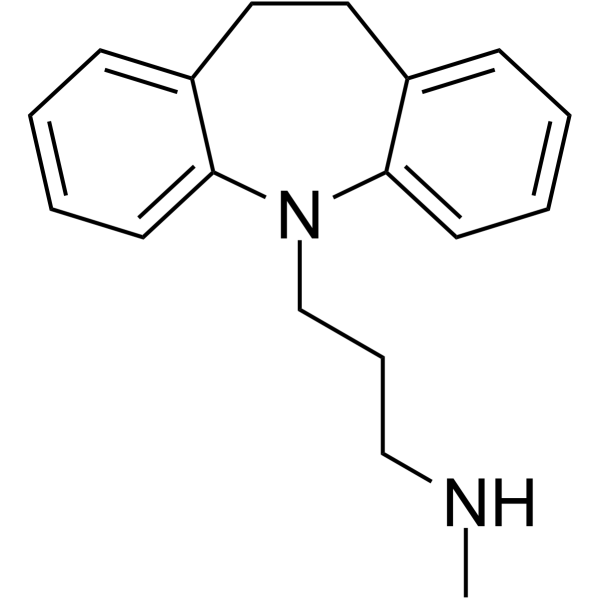
![3-(5,6-dihydrobenzo[b][1]benzazepin-11-yl)-N,N-dimethylpropan-1-amine Structure](https://www.chemsrc.com/caspic/389/50-49-7.png) CAS#:50-49-7
CAS#:50-49-7 CAS#:113-52-0
CAS#:113-52-0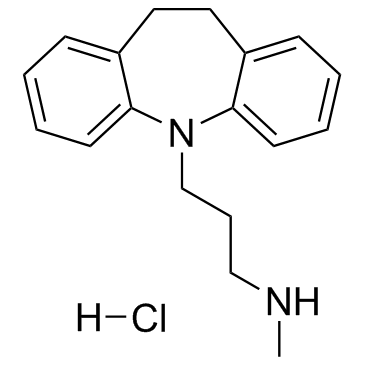 CAS#:58-28-6
CAS#:58-28-6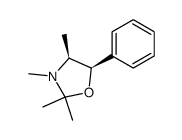 CAS#:51018-29-2
CAS#:51018-29-2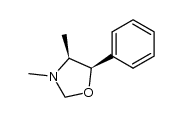 CAS#:123618-06-4
CAS#:123618-06-4![(2R)-3c,4-dimethyl-2r-phenyl-1-oxa-4-aza-spiro[4.5]decane Structure](https://www.chemsrc.com/caspic/285/102339-76-4.png) CAS#:102339-76-4
CAS#:102339-76-4![3-(10,11-Dihydro-5H-dibenzo[b,f]azepin-5-yl)-N-methyl-N-(2H3)methyl-1-propanamine Structure](https://www.chemsrc.com/caspic/401/65100-48-3.png) CAS#:65100-48-3
CAS#:65100-48-3![3-(10,11-dihydro-5H-dibenzo[b,f]azepin-5-yl)-N-ethyl-N-methylpropan-1-amine Structure](https://www.chemsrc.com/caspic/395/19009-26-8.png) CAS#:19009-26-8
CAS#:19009-26-8![3-(10,11-dihydro-5H-dibenzo[b,f]azepin-5-yl)-N-isopropyl-N-methylpropan-1-amine Structure](https://www.chemsrc.com/caspic/411/81256-33-9.png) CAS#:81256-33-9
CAS#:81256-33-9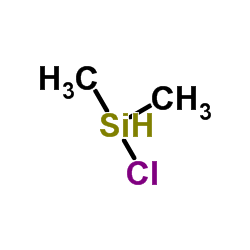 CAS#:1066-35-9
CAS#:1066-35-9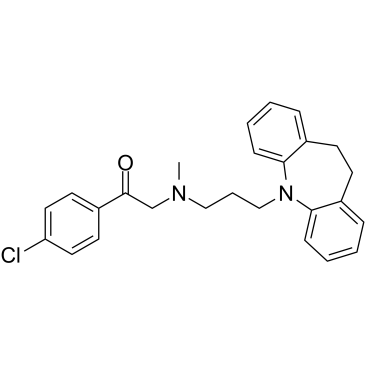 CAS#:23047-25-8
CAS#:23047-25-8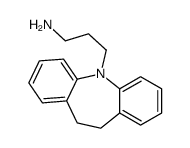 CAS#:2095-95-6
CAS#:2095-95-6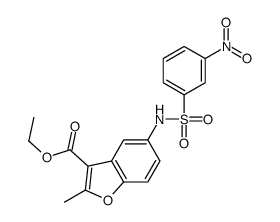 CAS#:5227-91-8
CAS#:5227-91-8